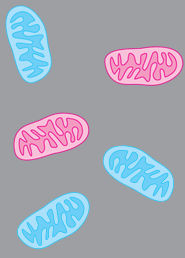- Home
- A-Z Publications
- Annual Review of Cell and Developmental Biology
- Previous Issues
- Volume 11, 1995
Annual Review of Cell and Developmental Biology - Volume 11, 1995
Volume 11, 1995
- Preface
-
- Review Articles
-
-
Vasculogenesis
Werner Risau, and Ingo FlammeVol. 11 (1995), pp. 73–91More LessInduction by fibroblast growth factors of mesoderm during gastrulation leads to blood-forming tissue, including angioblasts and hemopoietic cells, that together constitute the blood islands of the yolk sac. The differentiation of angioblasts from mesoderm and the formation of primitive blood vessels from angioblasts at or near the site of their origin are the two distinct steps during the onset of vascularization that are defined as vasculogenesis. Vascular endothelial growth factor and its high-affinity receptor tyrosine kinase flk-1 represent a paracrine signaling system crucial for the differentiation of endothelial cells and the development of the vascular system. Specific cell adhesion molecules such as VE-cadherin and PECAM-1 (CD-31), and transcription factors such as ets-1, as well as mechanical forces and vascular regression and remodeling are involved in the subsequent events of endothelial cell differentiation, apoptosis, and angiogenesis.
-
-
-
Keratins and the Skin
Vol. 11 (1995), pp. 123–154More LessKeratins are the major structural proteins of the vertebrate epidermis and its appendages, constituting up to 85% of a fully differentiated keratinocyte. Together with actin microfilaments and microtubules, keratin filaments make up the cytoskeletons of vertebrate epithelial cells. Traced as far back in the evolutionary kingdom as mollusks, keratins belong to the superfamily of intermediate filament (IF) proteins that form alpha-helical coiled-coil dimers which associate laterally and end-to-end to form 10-nm diameter filaments. The evolutionary transition between organisms bearing an exoskeleton and those with an endoskeleton seemed to cause considerable change in keratin. Keratins expanded from a single gene to a multigene family. Of the approximately 60 IF genes in the human genome, half encode keratins, and at least 18 of these are expressed in skin. Vertebrate keratins are subdivided into two sequence types (I and II) that are typically coexpressed as specific pairs with complex expression patterns. The filament-forming capacity of a pair is dependent upon its intrinsic ability to self-assemble into coiled-coil heterodimers, a feature not required of the invertebrate keratins (Weber et al 1988). Approximately 20,000 heterodimers of type I and type II keratins assemble into an IF. Mutations that perturb keratin filament assembly in vitro can cause blistering human skin disorders in vivo. From studies of these diseases, an important function of keratins has been unraveled. These filaments impart mechanical strength to a keratinocyte, without which the cell becomes fragile and prone to rupturing upon physical stress. In this review, studies on the pattern of expression, structure, and function of skin keratins are summarized, and new insights into the functions of these proteins and their involvement in human disease are postulated.
-
-
-
Heat Shock Transcription Factors: Structure and Regulation
Vol. 11 (1995), pp. 441–469More LessOrganisms respond to elevated temperatures and to chemical and physiological stresses by an increase in the synthesis of heat shock proteins. The regulation of heat shock gene expression in eukaryotes is mediated by the conserved heat shock transcription factor (HSF). HSF is present in a latent state under normal conditions; it is activated upon heat stress by induction of trimerization and high-affinity binding to DNA and by exposure of domains for transcriptional activity. Analysis of HSF cDNA clones from many species has defined structural and regulatory regions responsible for the inducible activities. The heat stress signal is thought to be transduced to HSF by changes in the physical environment, in the activity of HSF-modifying enzymes. or by changes in the intracellular level of heat shock proteins.
-
Previous Volumes
-
Volume 39 (2023)
-
Volume 38 (2022)
-
Volume 37 (2021)
-
Volume 36 (2020)
-
Volume 35 (2019)
-
Volume 34 (2018)
-
Volume 33 (2017)
-
Volume 32 (2016)
-
Volume 31 (2015)
-
Volume 30 (2014)
-
Volume 29 (2013)
-
Volume 28 (2012)
-
Volume 27 (2011)
-
Volume 26 (2010)
-
Volume 25 (2009)
-
Volume 24 (2008)
-
Volume 23 (2007)
-
Volume 22 (2006)
-
Volume 21 (2005)
-
Volume 20 (2004)
-
Volume 19 (2003)
-
Volume 18 (2002)
-
Volume 17 (2001)
-
Volume 16 (2000)
-
Volume 15 (1999)
-
Volume 14 (1998)
-
Volume 13 (1997)
-
Volume 12 (1996)
-
Volume 11 (1995)
-
Volume 10 (1994)
-
Volume 9 (1993)
-
Volume 8 (1992)
-
Volume 7 (1991)
-
Volume 6 (1990)
-
Volume 5 (1989)
-
Volume 4 (1988)
-
Volume 3 (1987)
-
Volume 2 (1986)
-
Volume 1 (1985)
-
Volume 0 (1932)

